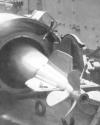
On 3 Jan 1823, Robert Whitehead was born, the British engineer who invented the modern torpedo, as a sub-surface, self-propelling weapon to deliver an explosive charge against the hull of a target ship. The term “torpedo” had been in use since the American civil war, but those early devices were primitive - explosive carried in a small boat with a spar pointed forward to be a trigger upon contact with the target hull. Whitehead’s innovations were adopted by various countries. Read this biographical article to learn more about his work.
An interesting and little-known connection is with the Von Trapp family made famous by the The Sound of Music Broadway hit (1959) and movie (1965). The singing family was portrayed making their famous escape from Nazi occupied Austria.
What the movie makes no reference to, are several other ties of the Von Trapp family to military history. The childrens’ father, Georg Von Trapp, served aboard subnmarines with the Austrian Navy. The childrens’ mother was Agatha Whitehead Von Trapp, granddaughter of the inventor, Robert Whitehead. Much of the wealth held by the Von Trapp family before the war, was passed down to them from sales of the Whitehead Torpedo.

On 3 Jan 1980, Joy Adamson, naturalist, conservationist and famous as author of Born Free was killed in Northern Kenya. Besides Elsa, the lion cub, Joy had rescued baby elephants, leopards, and cheetahs. Today's book pick is: The Great Safari: The Lives of George and Joy Adamson, Famous for Born Free, by Adrian House. In this joint biography of Joy and her husband, House never ignores Joy's often scurrilous behavior and destructive tantrums. House takes pains to recognize her great qualities—her love of animals, her recognition of the need to conserve them, and her generosity to the conservation movement—and to make clear that she was a woman of “vision, energy, tenacity, courage and skill as an artist and a photographer.”
It is available from Amazon, typically about New from $40.56. Used from $2.25. (As of earlier time of writing - subject to change.)
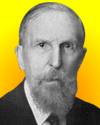 | After a duration of a thousand years, the power of astrology broke down when, with Copernicus, Kepler, and Galileo, the progress of astronomy overthrew the false hypothesis upon which the entire structure rested, namely the geocentric system of the universe. The fact that the earth revolves in space intervened to upset the complicated play of planetary influences, and the silent stars, related to the unfathomable depths of the sky, no longer made their prophetic voices audible to mankind. Celestial mechanics and spectrum analysis finally robbed them of their mysterious prestige. |
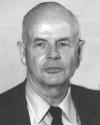 | The year 1918 was the time of the great influenza epidemic, the schools were closed. And this was when, as far as I can remember, the first explicitly strong interest in astronomy developed ... I took a piece of bamboo, and sawed a piece in the middle of each end, to put a couple of spectacle lenses in it. Well, the Pleiades looked nice because the stars were big. I thought I was looking at stars magnified. Well, they weren’t. It was a little thing with two lenses at random on each end, and all you got were extra focal images, big things, but I thought I was looking at star surfaces. I was 12 years old. |
 | Mathematics, as much as music or any other art, is one of the means by which we rise to a complete self-consciousness. The significance of mathematics resides precisely in the fact that it is an art; by informing us of the nature of our own minds it informs us of much that depends on our minds. |
| Before you look at today's web page, see if you can answer some of these questions about the events that happened on this day. Some of the names are very familiar. Others will likely stump you. Tickle your curiosity with these questions, then check your answers on today's web page. | |
| Births | |
 | On 3 Jan 1906, William Wilson Morgan was born, an American astronomer who provided the first evidence of the shape of the Milky Way Galaxy (1951). With Keenan and Kellman, he introduced stellar luminosity classes and the two-dimensional classification of stellar spectra strictly based on the spectra themselves. With Osterbrock and Sharpless he demonstrated the shape of the Galaxy using precise distances of O and B stars obtained from spectral classifications. What shape for the Milky Way Galaxy did his evidence provide? |
 | Robert Whitehead, born 3 Jan 1823, was a British engineer who invented the modern form of a certain weapon. By 1870, he had developed it in a useful form, and the British government purchased his invention the following year. Edison made a movie of the weapon being demonstrated in 1900. What was the weapon he developed? |
| Deaths | |
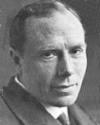 | Reginald Punnet (1875-1967) devised the “Punnett Square” for which he remains known. His interest in natural science began as a child, while afflicted by appendicitis, when he read a series of books on biology that his father had bought. During World War I, Punnett developed a technique of separating chicks using sex-linked plumage colours to select the more useful male chicks. For what is the Punnett Square used? |
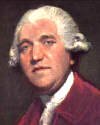 | An English inventor, artist and potter (1730-1795) placed the manufacture of stoneware on a scientific basis, and founded the potteries of North Staffordshire. The agateware and unglazed blue or green stoneware he decorated with white neo-classical designs, used pigments he invented. He designed machinery and kilns. For his invention of a pyrometer for measuring high temperatures, he was made a fellow of the Royal Society. What is the name of this famous maker of pottery? |
| Events | |
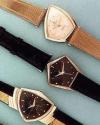 | On 3 Jan of a certain year, the world's first electric watch was introduced in Lancaster, Pennsylvania, by the Hamilton Watch Company. The idea of a watch which never needed winding was very exciting to consumers, and its popularity was enhanced by a number of very dramatic case styles with non-traditional asymmetrical styling. In which decade were the world's first electric watches introduced? |
 | On 3 Jan 1919, Ernest Rutherford first accomplished the artificial transmutation of an element. By bombarding atoms of a certain element with alpha particles emitted by radioactive materials he transmuted some of these atoms into another element. What was the element with which he began, and what element resulted? |
Fast answers for the previous newsletter for January 2: biochemistry • niobium • pendulum • stratosphere • decade including the year 1959 • John Roebling.
 If you enjoy this newsletter, the website, or wish to offer encouragement or ideas, please send feedback by using your mail reader Reply button.
If you enjoy this newsletter, the website, or wish to offer encouragement or ideas, please send feedback by using your mail reader Reply button. Your click on a Facebook, StumbleUpon, or other social button on the site webpages is also a welcome sign of appreciation. Thank you for using them.
© This newsletter is copyright 2020 by todayinsci.com. Please respect the Webmaster's wishes and do not put copies online of the Newsletter — or any Today in Science History webpage. (If you already have done so, please remove them. Thank you.) Offline use in education is encouraged such as a printout on a bulletin board, or projected for classroom viewing. Online, descriptive links to our pages are welcomed, as these will provide a reader with the most recent revisions, additions and/or corrections of a webpage. For any other copyright questions, please contact the Webmaster by using your mail reader Reply button.
--
If you do not want to receive any more newsletters, Unsubscribe
To update your preferences and to unsubscribe visit this link
Executive Real Estate Business Class
-
"It was like a man with wings. It wasn't like anything you'd see on TV or in a monster movie." ...
About the publisher
Search This Blog
Blog Archive
-
▼
2021
(585)
-
▼
January
(109)
- Ian Kershaw on why Hitler declared war on America
- On This Day for January 31 - Guy Fawkes executed i...
- Newsletter for Sunday 31 January.
- January 31: Slavery Abolished in the USA, Guy Fawk...
- On This Day for January 30 - “Great Soul” assassin...
- Newsletter for Saturday 30 January.
- January 30: Oliver Cromwell Ritually Executed, Mah...
- On This Day for January 29 - Iraq, Iran, and North...
- Newsletter for Friday 29 January.
- January 29: Romeo and Juliet, Coca-Cola and the Se...
- 'The Food That Built America' Is Back!
- On This Day for January 28 - Explosion of the spac...
- Newsletter for Thursday 28 January.
- Inside The Still-Mysterious Circumstances Of Heath...
- Demystified: What’s the Difference Between a Presi...
- On This Day for January 27 - Vietnam War ended, Wo...
- Newsletter for Wednesday 27 January.
- January 27: Kaiser Bill is Born, the Siege of Leni...
- You are now unsubscribed
- What The Wild West Actually Looked Like in 48 Reve...
- New Savings! $50 off Family Memberships
- On This Day for January 26 - First European settle...
- Newsletter for Tuesday 26 January.
- January 26: Catholic Counter-Reformation, British ...
- On This Day for January 25 - Claudius affirmed as ...
- Newsletter for Monday 25 January.
- January 25: São Paulo Founded, Charles Wilkes Disc...
- Queen Victoria and Prince Albert's marriage | Wors...
- On This Day for January 24 - Opportunity's Mars la...
- Newsletter for Sunday 24 January.
- January 24: Scouting for Boys, Apple's Macintosh a...
- On This Day for January 23 - Madeleine Albright sw...
- See All That's Interesting Most Popular Articles
- Please Confirm Subscription To Our Newsletter
- The "Alaskan Avenger" Who Attacked Sex Offenders W...
- On This Day for January 22 - Roe v. Wade ruling, L...
- Newsletter for Friday 22 January.
- On This Day for January 21 - First commercial Conc...
- Newsletter for Thursday 21 January.
- Need Context with Your News?
- Demystified: Where Do Honeybees Go in the Winter?
- On This Day for January 20 - Barack Obama sworn in...
- Newsletter for Wednesday 20 January.
- On This Day for January 19 - Rule in India transfe...
- Newsletter for Tuesday 19 January.
- On This Day for January 18 - German Empire establi...
- Newsletter for Monday 18 January.
- January 18: King of Siam Kills the Crown Prince of...
- Queen Victoria and Prince Albert: was their union ...
- On This Day for January 17 - Hawaiian monarchy ove...
- Newsletter for Sunday 17 January.
- January 17: US-Modoc War, the UN Security Council ...
- On This Day for January 16 - Beginning of Persian ...
- Newsletter for Saturday 16 January.
- January 16: Ivan the Terrible, Louis XVI's Death S...
- The Tragedy Of David Reimer, The Boy Forced To Liv...
- On This Day for January 15 - British Museum opened...
- Newsletter for Friday 15 January.
- January 15: Henry VIII and the Church of England, ...
- On This Day for January 14 - Premiere of Giacomo P...
- Newsletter for Thursday 14 January.
- January 14: The Dutch Conquer Malacca, the US Revo...
- Demystified: Why Does Water Freeze from the Top Down?
- On This Day for January 13 - Émile Zola's “J'accus...
- Newsletter for Wednesday 13 January.
- January 13: 1st Issue of "The Times" of London, Ch...
- On This Day for January 12 - Haiti severely damage...
- Newsletter for Tuesday 12 January.
- January 12: A Day of Coronation, Gandhi's Last Fas...
- On This Day for January 11 - Amelia Earhart's Hawa...
- Newsletter for Monday 11 January.
- January 11: Spices, Morse Code, Insulin and 55 Yea...
- The real history behind Bridgerton
- On This Day for January 10 - Common Sense publishe...
- Newsletter for Sunday 10 January.
- January 10: Thomas Paine Publishes Common Sense, T...
- On This Day for January 9 - Election of Mahmoud Ab...
- THE IGBO LANDING - HOW THEY COMMITTED SUICIDE
- Newsletter for Saturday 9 January.
- January 9: Joan of Arc's Trial, the Daguerreotype ...
- The Biggest Historical Discoveries From 2020 And M...
- On This Day for January 8 - Anniversary of Grimald...
- Newsletter for Friday 8 January.
- January 8: US National Debt Briefly Hits $0, Forma...
- On This Day for January 7 - Galileo's discovery of...
- Newsletter for Thursday 7 January.
- January 7: A Day of Invention - The Typewriter, Hy...
- On This Day for January 6 - Epiphany, Richard II i...
- Newsletter for Wednesday 6 January.
- January 6: Charles I put on Trial for Treason, FDR...
- Meet The Real-Life Goodfellas Whose True Stories W...
- On This Day for January 5 - Golden Gate Bridge con...
- Newsletter for Tuesday 5 January.
- January 5: Richmond Burns, The Nazi Party Forms, A...
- Last Call for 30% off Memberships
- On This Day for January 4 - Burma granted independ...
- Newsletter for Monday 4 January.
- January 4: The Colt Revolver, a 33 Year Strike and...
- Dangers of Victorian London| Roman history quiz | ...
- On This Day for January 3 - Martin Luther excommun...
-
▼
January
(109)
-
Blogroll
-
About
HistoryFact










0 comments:
Post a Comment